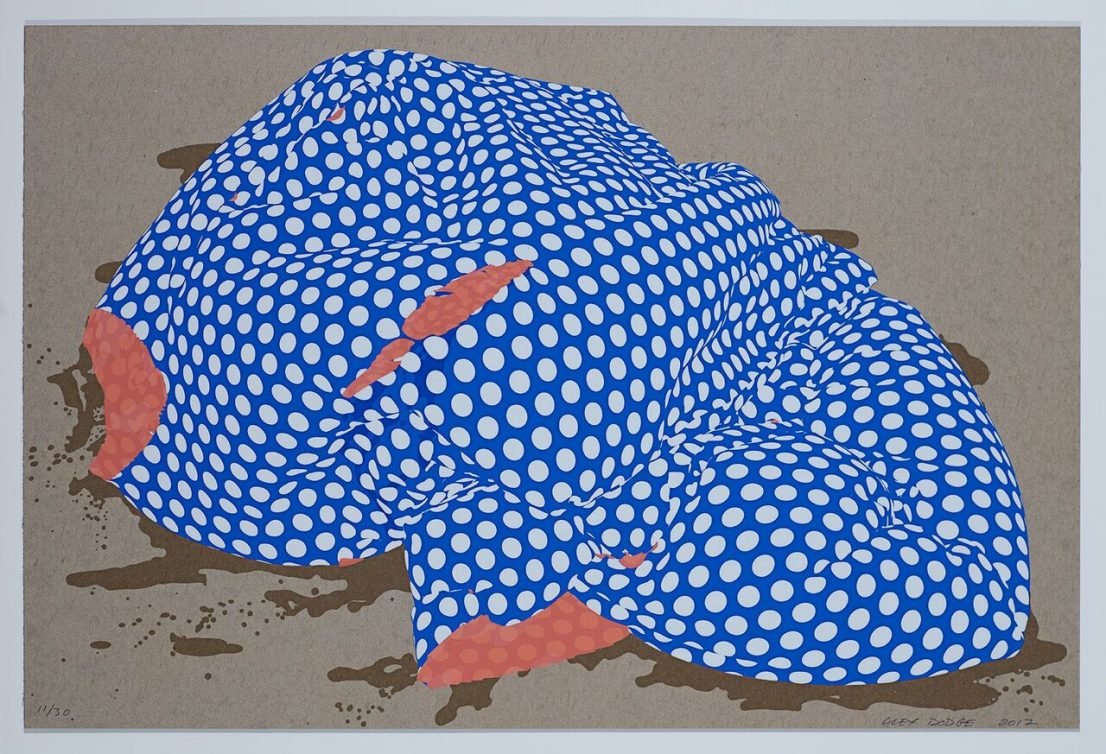Alex Dodge

Biography
Alex Dodge (b.1977, Denver, CO) is an internationally recognized artist. Although his works primarily take the final form of painting, his education and ever-growing knowledge of printmaking, coding software, and 3D design have led him to create some of the most innovative and cutting-edge techniques in art-making today. Dodge’s pushing of material boundaries to create compelling imagery is rooted just as much in technological advances as it is in traditional methods, particularly printmaking.
Dodge received his Bachelor of Fine Arts in 2001 from Rhode Island School of Design. He later attended New York University and received his MPS in Interactive Telecommunication in 2012. His work is included in the prominent permanent collections of The Metropolitan Museum of Art, MoMA, Whitney Museum of American Art, and the New York Public Library.
Haystack Perspective
Alex Dodge is pushing painting into the future. His signature raised patterns of oil paint are digitally sketched using 3D design software before landing on traditional canvas using laser-cut stencils and airbrushed backgrounds. In the artist’s words, “The intermediate stage in my work involves working between a range of different modeling and simulation software. Character modeling, rigging, and animation is done mostly in Maya, 3D Studio, or Blender, but the majority of my work recently happens in CLO 3D or Marvelous Designer for garment design and simulation. A lot of the tools I use are often employed in game development. Recent developments in GPU acceleration have made it a lot easier to do the physics simulations necessary for these paintings.”
Dodge’s canvases depict textiles that shroud and define nondescript forms in a realistic yet painterly manner. The patterned textiles delineate the bulky objects they cover by way of their undulating contours and foreshortened patterns. The paint handling is hard-edged but as sumptuously thick as fondant icing. Dodge achieves this effect by pushing oil paint through laser-cut stencils, a trick that nods to the centuries-old Japanese textile-printing practice of katazome. In his more recent work, Dodge utilizes the Japanese printmaking technique called bokashi, creating soft gradients.
Artist Perspective on Latest Print, Soft Power
“In the balance between levity and gravity my work seeks refuge. Often, it’s through humor’s lens that we can confront the more difficult questions in life. Art is a form of serious play. Take this print, for instance—layered both metaphorically and literally. The playful allure of plush letters composing “Soft Power” has a deceptive simplicity. While the term might be associated primarily with Joseph Nye’s musings from the ’80s, its echoes can be traced back to Adam Smith’s seminal work, The Theory of Moral Sentiments. A postulation of conflict resolution not via militant might but through the allure of economic incentives. It brings to mind the belief: nations with shared commercial interests, exemplified by global chains like McDonalds, would shy from martial confrontations. This belief, a guiding star for decades, now fades. The softness in the letters captures a melancholy—a fatigue from holding weight. Aptly titled “Hard Times for Soft Power,” the piece stands as a reflection on our shifting epoch. Are we perhaps witnessing a reversal, a cyclical return? Was Fukuyama’s proclamation merely fleeting or, worse, premature? The work offers no resolution or side on our current moment, only soft reflection and hope.”

From the Artist
“I often think about an artist’s process as being a negotiation between the internal needs and limitations of the artist and the properties of their environment. The synthesis of technological systems and more traditional physical material processes is partly an integration of those parts of myself; a kind of integration between the left and right hemispheres maybe. It’s also a means of negotiating a very complex and dynamic cultural space that we live in.”


